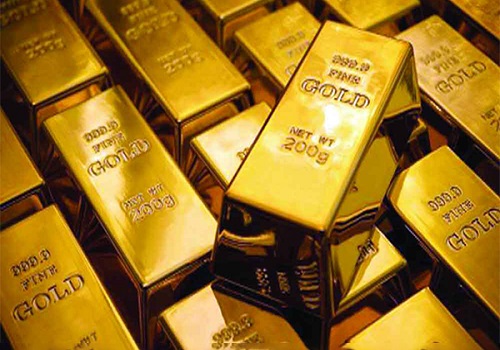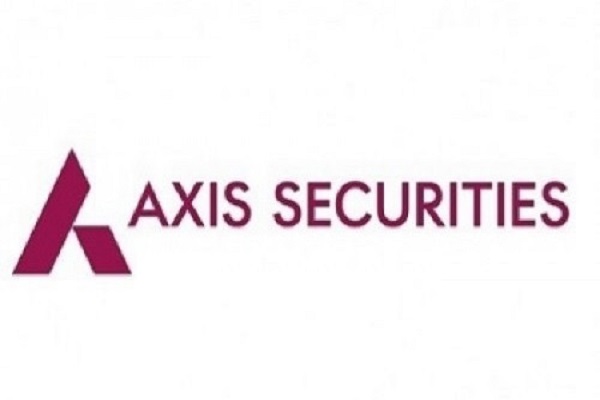Gold trading range for the day is 58650 - 59330 - Kedia Advisory

Gold
Gold faced a decrease of -0.17%, closing at 58,898, driven by indications of a robust US economy, allowing the Federal Reserve room to maintain its restrictive monetary policies or potentially increase interest rates further. This was underscored by a surprising drop in new unemployment claims in the US, reaching their lowest level in over six months at the end of August, contradicting expectations of a modest increase and defying recent labor market softening. In India, physical gold discounts reached their highest point in seven weeks due to strong domestic prices, limiting consumer purchases. Conversely, China witnessed a surge in premiums, reaching as high as $55 per ounce above global spot prices. This optimism stemmed from China's economic support measures. In India, dealers offered discounts of up to $5 per ounce compared to official domestic prices, a slight increase from the previous week's $4 discount. The World Gold Council reported a substantial outflow of 46 tonnes, equivalent to $2.5 billion, from global gold exchange-traded funds in August. By the end of August, holdings in these funds had declined to their lowest levels since March 2020, standing at 3,178 tonnes. From a technical standpoint, the market experienced long liquidation, with open interest dropping by -0.59% to settle at 11,816 contracts. Prices saw a decline of -100 rupees. Support for Gold is currently expected at 58,775, with a potential test of 58,650. On the upside, resistance is likely at 59,115, and a breakthrough above this level could lead to further testing at 59,330.
Trading Ideas:
* Gold trading range for the day is 58650-59330.
* Gold dropped lower as data pointed to a robust US economy
* New unemployment claims in the US fell to their lowest in over six months in the final week of August
* People's Bank of China increased its gold holdings to 69.62 million fine troy ounces at end-August.
Silver
Silver registered a decline of -0.29%, settling at 71,563, mainly influenced by signs of a resilient U.S. economy, which has triggered concerns about persistent inflation and interest rates. This sentiment was reinforced as U.S. initial jobless claims reached their lowest level since February, raising worries about sticky inflation and the potential for higher interest rates. Additional concerns emerged from Japan, where the second-quarter economic growth was weaker than initially estimated, coupled with a decline in wages in July, intensifying worries about slower global economic growth. In Europe, although German inflation slowed slightly in August, it remained elevated due to rising energy and food prices. The Perth Mint reported that its gold and silver product sales in August dropped to their lowest levels since February 2020. This weak demand was attributed to a stronger U.S. dollar and higher yields. Gold coin and minted bar sales for the month totaled 34,875 ounces, down from 44,009 ounces in July and a 59% decrease year-on-year. Sales of silver products reached a more than three-year low at 792,503 ounces in August, down 8% from the previous month and 52% year-on-year. From a technical standpoint, the market experienced fresh selling pressure, with open interest increasing by 4.56% to reach 17,123 contracts. Prices saw a decline of -207 rupees. Support for Silver is currently expected at 71,255, with a potential test of 70,950. On the upside, resistance is likely at 72,100, and a breakthrough above this level could lead to further testing at 72,640.
Trading Ideas:
* Silver trading range for the day is 70950-72640.
* Silver dropped on weekly basis on signs of a resilient U.S. economy.
* Inflation and interest rate worries persist after data showed U.S. initial jobless claims fell to their lowest level since February
* Data showed Japan's economy grew less than initially estimated in the second quarter and wages slumped in July
Crude oil
Crude oil posted a gain of 0.43%, closing at $72.58, as investors focused on tightening supply conditions, despite ongoing macroeconomic uncertainties. Saudi Arabia and Russia extended their voluntary supply cuts by a total of 1.3 million barrels per day until year-end, boosting market sentiment. However, demand concerns persist, primarily due to China's economic slowdown and apprehensions about further interest rate hikes by the Federal Reserve, which could impact energy consumption. Positive news emerged from the U.S., where crude oil stockpiles decreased for the fourth consecutive week, dropping over 6% in the past month. This decline was driven by high refinery utilization rates to meet global energy demand. The Energy Information Administration reported a substantial 6.3 million-barrel drop in crude inventories, surpassing the expected 2.1 million-barrel decrease. Crude stocks currently stand at 416.6 million barrels, marking a 6.5% reduction since the beginning of August. Additionally, Cushing, Oklahoma, saw a significant decrease of 1.8 million barrels in crude stocks. Gasoline stocks in the U.S. fell by 2.7 million barrels during the week, exceeding expectations. From a technical perspective, the market witnessed fresh buying interest, with open interest increasing by 4.25% to reach 8,625 contracts. Prices surged by 31 rupees. Support for Crude oil is currently expected at 7,182, with the potential for a test of 7,106. On the upside, resistance is likely at 7,317, and a breakout above this level could lead to further testing at 7,376.
Trading Ideas:
* Crudeoil trading range for the day is 7106-7376.
* Crude oil gains as investors chose to focus on tighter supply
* Saudi Arabia and Russia extended their voluntary supply cuts of a combined 1.3 mbpd to the end of the year.
* U.S. crude oil stockpiles fell for the fourth consecutive week, with inventories down over 6% in the last month
Natural gas
Natural gas saw a modest increase of 0.23%, settling at 215.9, driven by forecasts of hotter-than-normal weather extending through late September and concerns about a potential strike at Chevron's liquefied natural gas (LNG) export projects in Australia, which resulted in a surge in global gas prices. In Europe, gas futures spiked by 16% to reach a one-week high of around $11 per mmBtu at the Dutch Title Transfer Facility (TTF) benchmark following a strike by workers at Chevron's LNG projects in Australia, triggered by failed negotiations. Chevron's Australian facilities account for more than 5% of global supply, and daily output had been declining, potentially reaching a 12-week low. Meteorologists predicted above-average temperatures until at least September 23. However, as the weather cools seasonally, U.S. gas demand, including exports, was forecasted to hover around 101.1 bcfd in the coming weeks before sliding to 96.9 bcfd in two weeks. From a technical perspective, the market experienced short covering, with a decrease of -3.56% in open interest to settle at 46,365 contracts. Prices increased by 0.5 rupees. Support for Natural gas is currently anticipated at 213.9, with potential testing of 211.8. On the upside, resistance is likely at 219.7, and a move beyond this level could lead to further testing at 223.4.
Trading Ideas:
* Naturalgas trading range for the day is 211.8-223.4.
* Natural gas edged up on forecasts of hotter than normal weather
* Support also seen due to worries about a strike at U.S. energy firm Chevron's LNG export projects in Australia.
* Output was on track to drop about 3.0 bcfd over the past four days to a preliminary 12-week low of 100.1 bcfd on Friday.
Copper
Copper experienced a decline of -0.95%, settling at 721.15, influenced by several factors including a strengthening dollar, disappointing economic data from China, and market expectations for additional economic support from Beijing. Chinese economic data revealed weaker-than-expected growth in the service sector for August, indicating a cooling trend in demand. Additionally, the foreign trade report highlighted significant drops in both imports and exports during the same period. Beijing had previously introduced measures to bolster the property market, such as reducing mortgage rates for first-time homebuyers and adjusting down payment ratios in select cities. However, there is still an expectation for more policy support as China faces the risk of missing its economic growth target for the year. In contrast, copper production in Peru surged by 17.7% year-over-year in July, reaching an output of 229,728 metric tons. Meanwhile, the global refined copper market shifted from a deficit of 196,000 metric tons in the first half of 2022 to a surplus of 213,000 metric tons in the same period of 2023, according to the ICSG. In June, the global refined copper market recorded a deficit of 90,000 tons, compared to a deficit of 58,000 tons in May. From a technical perspective, the market saw fresh selling pressure, with open interest increasing by 11.72% to reach 6,758 contracts. Prices declined by -6.9 rupees. Support for Copper is currently expected at 718.8, with the potential for a test of 716.5. On the upside, resistance is likely at 725.2, and a breakthrough above this level could lead to further testing at 729.3.
Trading Ideas:
* Copper trading range for the day is 716.5-729.3.
* Copper dropped due to a strengthening dollar, disappointing Chinese economic data
* Data indicated weaker-than-expected growth in China's service sector for August, signaling a cooling demand trend.
* Commerzbank revises copper price forecast, now predicts year-end at $8,800 per ton, down from $9,000.
Zinc
Zinc faced a significant decline of -2.03%, closing at 217.45, primarily influenced by a strong dollar and mixed economic data from major economies, including China, a key consumer of metals. While China has ramped up its domestic production of refined zinc this year, it recently resumed importing the metal after a prolonged absence from the international market. In July, China imported 76,800 metric tons of zinc, marking the highest monthly intake since April 2019. Despite increased domestic output, the Shanghai market continues to grapple with low inventory levels and tight time-spreads. Shanghai Futures Exchange (ShFE) registered stocks currently stand at a modest 43,181 tons. The persistent tightness along the front part of the Shanghai forward curve has led to cash commanding a premium over forward months for most of the past year. Recently, a drop of 17,800 tons in visible and semi-visible zinc inventory in China was attributed to dip-buyers acquiring available metal. It's noteworthy that the total visible and semi-visible zinc inventory in China is now less than the amount held in the London Metal Exchange warehouse system, which currently holds 145,175 tons. From a technical standpoint, the market experienced long liquidation, with open interest decreasing by -17.07% to settle at 3,698 contracts. Prices saw a decline of -4.5 rupees. Support for Zinc is currently anticipated at 215.9, with the potential for a test of 214.1. On the upside, resistance is likely at 219.9, and a move above this level could lead to further testing at 222.1.
Trading Ideas:
* Zinc trading range for the day is 214.1-222.1.
* Zinc dropped driven by a strong dollar and patchy data from China.
* China has rediscovered its appetite for imports of refined zinc after a prolonged absence from the international market.
* Imports and exports in China still fell and Beijing still risks missing its economic growth target this year
Aluminium
Aluminium saw a decline of -0.7%, closing at 199.85, with weak Chinese economic data and ongoing property market concerns weighing on risk sentiment. However, the market found some support from expectations of additional policy support. ANZ Bank predicts a shift in the aluminium market towards a deficit by 2024, which is expected to bolster prices in the near future. The bank maintains its price projection for aluminium in the 0-3 month timeframe at $2,500 per ton. Despite this positive outlook, bearish sentiment prevails due to lackluster economic data from China. In China, aluminium billet inventories across major consumption areas increased by 17.53% week-on-week, totaling 81,800 tonnes. However, the rate of inventory growth slowed in early September. Aluminium supply pressures have risen due to China's production capacity limits of 45 million tons and Indonesia's ban on bauxite exports. The demand for aluminium is expected to surge in China, driven by increased use in solar panels and electric vehicles, offsetting the decline in construction-related usage and indicating a rebound in purchasing activity. From a technical perspective, the market experienced fresh selling pressure, with open interest increasing by 5.12% to reach 4,251 contracts. Prices decreased by -1.4 rupees. Support for Aluminium is currently expected at 199.3, with the potential for a test of 198.8. On the upside, resistance is likely at 200.4, and a move above this level could lead to further testing at 201.
Trading Ideas:
* Aluminium trading range for the day is 198.8-201.
* Aluminium dropped as weak Chinese economic data and property woes continued
* However, expectations of further policy support cushioned the fall in metal prices
* China’s aluminium billet inventories accumulate 12,200 tonnes over a week to settle at 81,800 tonnes
Cotton
Cotton candy prices saw a 0.43% decline, settling at 60,380, mainly due to concerns about demand from China, a key buyer in the cotton market. Meanwhile, the U.S. Department of Agriculture (USDA) reported that 31% of the cotton crop was in good to excellent condition, with a slight decline following Hurricane Idalia's passage. China's cotton production has been reduced to 5.9 million metric tons for 2023/24, primarily due to a decrease in planted area. Additionally, the USDA's August WASDE report lowered the production forecast by 2.7 million bales while increasing consumption by 500,000 bales. India has experienced a 3.65 lakh-hectare drop in sowing compared to the previous year, mainly due to poor rainfall and monsoon conditions in Gujarat. The closure of major mills and a low stock of old cotton crops have contributed to tight local supplies. The new cotton crop has started arriving in parts of North and South India, with prices hovering above the minimum support price (MSP) levels. It is expected that demand will gradually pick up, especially after September 15. Arrivals in Punjab have been recorded at almost one-third of the previous year, 2021-22. In Rajkot, a major spot market, cotton prices ended at 29,635.4 Rupees, gaining a marginal 0.01 percent. From a technical standpoint, the market has seen fresh selling, with open interest increasing by 3.26% to settle at 95 contracts. Prices decreased by 260 rupees. Support is expected at 60,280, potentially testing 60,190. On the upside, resistance may be seen at 60,480, with a potential move towards 60,590.
Trading Ideas:
* Cottoncandy trading range for the day is 60190-60590.
* Cotton dropped amid worries about demand from China.
* However, heavy rainfall in China's Xinjiang region is expected to impact cotton quality and quantity.
* China's cotton production was lowered to 5.9 million metric tons on reduced planted area for 2023/24
* In Rajkot, a major spot market, the price ended at 29635.4 Rupees gained by 0.01 percent.
Turmeric
Turmeric prices edged up by 0.71%, settling at 14,808, primarily due to increased buying activities driven by rising festive demand. However, the turmeric market faces challenges with limited supplies and bleak production prospects. A decrease in turmeric cultivation in Maharashtra has contributed to supply constraints and price uncertainty. Despite expected rainfall in Maharashtra and Telangana, which could benefit turmeric crops, supply remains constrained. Additionally, subdued export inquiries at current price levels are putting pressure on prices. Farmers have shifted their focus, leading to expectations of a 20-25% decrease in turmeric sowing in states like Maharashtra, Tamil Nadu, Andhra Pradesh, and Telangana. Turmeric exports for April-June 2023 rose by 16.87% to 57,775.30 tonnes compared to the same period in 2022, indicating some level of demand. However, concerns about the monsoon loom large, as India is experiencing its lowest monsoon rains in eight years, potentially impacting essential crops like sugar, pulses, rice, and vegetables, leading to higher food inflation. In Nizamabad, a major spot market, turmeric prices ended at 14,032.7 Rupees, representing a marginal decline of -0.09 percent. From a technical perspective, the market is witnessing short covering, with open interest decreasing by -0.39% to settle at 15,210 contracts. Prices have increased by 104 rupees. Support levels are expected at 14,604, potentially testing 14,402, while resistance is likely at 14,974, with the potential for prices to test 15,142.
Trading Ideas:
* Turmeric trading range for the day is 14402-15142.
* Turmeric gains as buying activities has improved in wake of increased festive demand.
* Supplies are down whereas production prospects are also looking bleak
* The upcoming week is expected to bring normal to above-normal rainfall to Maharashtra and Telangana
* In Nizamabad, a major spot market, the price ended at 14032.7 Rupees dropped by -0.09 percent.
Jeera
Jeera (cumin) prices surged by 3.82% to reach 65,260 due to a decline in local market supplies. The festive season has boosted jeera demand, particularly among stockists who are concerned about diminishing miller stockpiles. However, Indian jeera's price competitiveness in the export market is not favorable, which could keep export activity subdued. China, a major buyer of Indian jeera, has reduced its purchases in recent months, affecting overall Indian exports. Drier weather conditions in Gujarat are expected to increase arrivals, potentially capping upward price movements. FISS forecasts predict that cumin demand will exceed 85 lakh bags this year, while supply is estimated at 65 lakh bags. Jeera exports for April-June 2023 increased by 13.16% to 53,399.65 tonnes compared to the same period in 2022. However, June 2023 saw a 59.81% drop in exports compared to May 2023, and a 51.78% drop compared to June 2022. India is currently experiencing its lowest monsoon rains in eight years, with El Niño weather conditions expected to reduce September precipitation. In Unjha, a major spot market, jeera prices ended at 60,237.65 Rupees, marking a 0.27% gain. From a technical perspective, the market is witnessing fresh buying, with open interest increasing by 8.86% to settle at 3,429 contracts. Prices have risen by 2,400 rupees. Support levels are expected at 64,020, with the potential to test 62,780, while resistance is likely at 66,200, and prices could test 67,140.
Trading Ideas:
* Jeera trading range for the day is 62780-67140.
* Jeera prices have surged attributed to a decrease in local market supplies.
* The increased demand for jeera during festivals has piqued the interest of stockists
* Drier weather condition in Gujarat will also lead to rise in arrivals that will cap the upwards move.
* In Unjha, a major spot market, the price ended at 60237.65 Rupees gained by 0.27 percent.
Views express by all participants are for information & academic purpose only. Kindly read disclaimer before referring below views. Click Here For Disclaimer


















